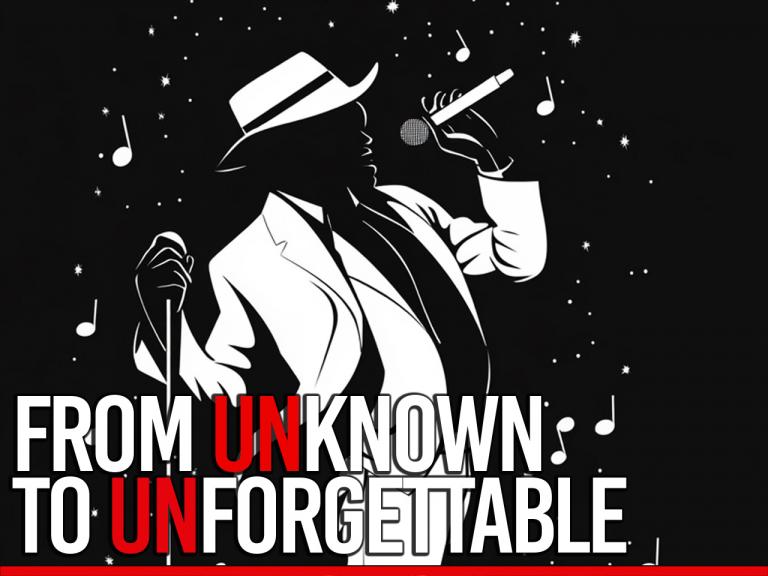
New artists often think showcasing every style they love will prove their talent. But dropping a diverse debut project can confuse your audience and kill your momentum. Learn why musical focus builds stronger fan loyalty, and how to release music strategically to grow your brand the smart way.
Why Diverse Albums from New Artists Often Fall Flat: A Strategic Guide to Building a Music Brand That Connects
When you’re a new artist entering the music industry, the temptation to showcase your full range of influences and styles in your debut EP or album is strong. After all, you might love R&B, dabble in rock, admire trap, get lost in neo-soul, and feel deeply connected to country music too. You might think, “If I show them I can do it all, everyone will love something.”
But here’s the truth: that strategy almost always backfires.
Why a Diverse Soundtrack Doesn’t Build a Loyal Audience
Launching a project with a wide array of musical styles before establishing your brand identity confuses listeners. Rather than seeing your debut as versatile, most listeners hear inconsistency. They don’t know how to categorize you, what to expect, or why they should come back.
The truth is that people gravitate toward artists they feel they “understand.” They want to know what you stand for sonically. When your debut project is a collage of unrelated sounds, your brand becomes unclear. That lack of focus makes it nearly impossible for fans, blogs, playlists, or industry professionals to follow you.
The Psychology of Musical Branding
Listeners, especially new ones, are drawn to cohesion. A debut project should function like a first impression: clear, memorable, and emotionally resonant. A well-themed project gives your audience something to grab onto. Think of your favorite artists. Most of them didn’t earn your attention by jumping between genres. They mastered one sound, earned trust, and then explored.
Trying to show everything you love about music in one release is a fast way to confuse your audience and lose their attention.
Proving the Sound Before the Project
Before you even consider releasing a full EP or album, you should know what style resonates most with your potential audience. If you don’t have fans yet, then you haven’t proven that any specific style of yours actually works in the marketplace. The smartest strategy is to release singles and observe which one gets the most traction.
A successful single can tell you everything:
- What sonic direction connects best
- What kind of visuals people engage with most
- Which lyrics or messages resonate
- What platforms your audience prefers
Once you’ve identified the direction that works, your next move should be to reinforce that style with another single that complements the previous release. That’s how you build a brand: consistency, familiarity, and repetition.
The Cost of Experimentation Too Early
There is also a financial consequence to rushing into a collection of songs. Producing a full project takes real investment:
- Custom production for each song
- Writing and arranging
- Studio recording
- Mixing and mastering
- Visuals (cover art, video, photos)
- Promotion (ads, PR, radio, influencers, etc.)
When you spend money on five different styles before you know which one works, you risk wasting resources on songs no one will connect with. That’s five times the cost, five times the time, and five times the disappointment when none of them move the needle.
By contrast, releasing one single at a time gives you real-time feedback. If a song flops, you regroup and try again without exhausting your budget. If it succeeds, you double down.
Wait for the Demand
You should never feel rushed to release an EP or album. Let the public demand it.
If people are asking you, “When is the album coming?”, that’s a great sign. It means you’ve built enough interest and consistency that your fans want more. That demand will guide your strategy and tell you how much to invest in production, marketing, and visuals. At that point, you’re not just guessing — you’re projecting based on actual data.
A project without demand is just noise in an overcrowded industry.
Redefining “Return on Investment”
One of the biggest mistakes new artists make is thinking that every release should bring financial return. In the beginning, your greatest return is audience growth. If 1,000 people stream your song and 200 of them follow you, that’s a win. If a DJ adds your track to their rotation, or if you land a blog feature or playlist spot, that’s momentum. These are indicators of brand development.
Yes, money matters. But in the early stages of your career, attention is the currency. And attention is earned by consistency, clarity, and connection.
Build First, Diversify Later
Once you’ve built a recognizable sound and a core audience, then you can experiment. Established artists can release genre-blending albums because their fans already trust them. But even they usually introduce change gradually: maybe a different sound in a remix, a collaboration that leans into another genre, or a surprise track at the end of an album.
You have to earn the right to experiment.
Until then, focus on building your brand with intention. Release music strategically, listen to your audience, and grow your fanbase with consistent sound and storytelling. You don’t have to show everything you love about music in one release. Let your career be the long-form story. Just make sure the first chapter is strong enough to keep readers turning the page.
If you’re ready to find your sound and build your brand the smart way, CSP Music Group offers single development services, branding support, and market-tested strategies to help you launch the right way. Don’t waste your budget on a collection that won’t connect. Start with one sound. Start with purpose.
Article written by Dr. Christopher Starr, CEO of CSP Music Group.
